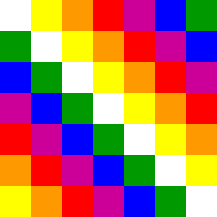![[flag]](../images/x/xu.gif)
image by António Martins, 16 Nov 2006

Last modified: 2021-12-24 by rob raeside
Keywords: mapuche | drum | kultrun | kultrung | contest | disc (yellow) | star: 5 points (red on yellow) | crescent (red on yellow) | crescent: to fly | chakana | suns: 2 | starfish |
Links: FOTW homepage |
search |
disclaimer and copyright |
write us |
mirrors
![[flag]](../images/x/xu.gif)
image by António Martins, 16 Nov 2006
See also:
External links:
In 1992, in the V Centenary of the discovery of America, the
Mapuche people adopted a national flag that was presented for the
first time to the Spanish king in his visit to Chile. The flag is
based on the Nagche regional flag, but
is quite different in the border, the stripes (only three) and the
central emblem.
Jaume Ollé, 08 Nov 1996
The Mapuche flag is essentially a horizontal tricolor of light blue, green and red with two additional black stripes, above and bellow, each charged with a row of “andean crosses” (or “incaic crosses”, a.k.a. chakanas), and on the center, overlaping the three main stripes, a yellow disc charged with the devices usually painted on traditional Mapuche drums (kultrun). These are divided in quarters by four cardinal radial segments forked at the tip and on each quarter an astronomical symbol.
In the spring of 1991 in Valdivia was celebrated a convention called Meli Witram Mapu of the Mapuche People. The adoption of a national flag was aborted and 500 projects were presented. Five projects were selectioned for the five regions of the Mapuches. The definitive national flag was approved in 1992. The Mapuche unified their traditional government in 1991 in the National Conference of Temuco (18-21 March). The Aukin Wallmapu Ngulam (Council of all the lands) dirige currently the Mapuche People.
The flags share a common symbolism:
Jaume Ollé, 16 Sep 1996
![[emblem]](../images/x/xu).gif)
image by António Martins, 16 Nov 2006
The central device (drum, in
mpauche language Kultrun) of the flag.
Jaume Ollé, 09 Jul 2004
Trivero
Mondovì’s Mapuche-Spanish online dictionary says that the
word for drum is "kultrung", but other dictionaries include (also)
"kultrun".
António Martins, 20 Oct 2008 and 16 Sep 2009
There is evidence of use of the kultrun Mapuche flag also on the Argentine side of the border, see photos:
There are a lot of details variations from one Mapuche
flag to another. For example the exact wide of the
stripes and the kultrun, or the exact colors.
Francisco Gregoric, 16 Jul 2004
The Mapuche “national” flag has a star on
the lower fly and crescent on the upper hoist, and a “starfish”
sun on the other two quadrants. Other Mapuche flags show the kultrun
with a “starfish” sun on all quadrants.
António Martins, 06 Jul 2004
We can see from the linked actual usage samples that several variants are in simultaneous use, apparently by the same people. These variations affect especially
This flag, with very minor differences, is listed
under number 201 at the chart Flags of Aspirant Peoples
[eba94] as: «Mapu [Araucania]
(Mapuche Indians) - Chile.».
Ivan Sache, 15 Sep 1999
The Santiago
Indymedia website shows a lot of Mapuche flags in a demonstration in
Santiago, Chile. The blue stripe seems to vary from medium to light blue,
with no meaning in that variation.
António Martins, 30 Jan 2006
The newspaper today has a picture (can’t find it online) of a
Mapuche protest in Chile. Flying is a Mapuche main flag,
but with the border (the shapes looking more like diamonds, but that may be
the picture) covered three (if not four; can’t see) sides, and no
emblem on the stripes (possibly two, maybe three). It’s somewhat
like the Nagche flag, but with no emblem and
possibly less stripes.
Nathan Lamm, 11 Aug 2004
The white designs inside the black stripes are geometric and straight
in all the Mapuche flags I have seen.
Francisco Gregoric, 16 Jul 2004

image by Kjell Roll Elgsaas, 14 Dec 1997
This is the flag of Qullasuyu, one of the Inca
“quarters”, the one including Chile.
António Martins, 17 Jul 2004
Mapuche do use the square rainbow Whipala flag as a kind of
“symbol of Native peoples from South America”. The whipala
flag is a symbol associated with the Inca Empire.
However in ancient times, groups as Mapuches did not accept been part of
empires as the Inca Empire. The Mapuche could keep their independence of the
Inca Empire.
Francisco Gregoric, 16 Jul 2004